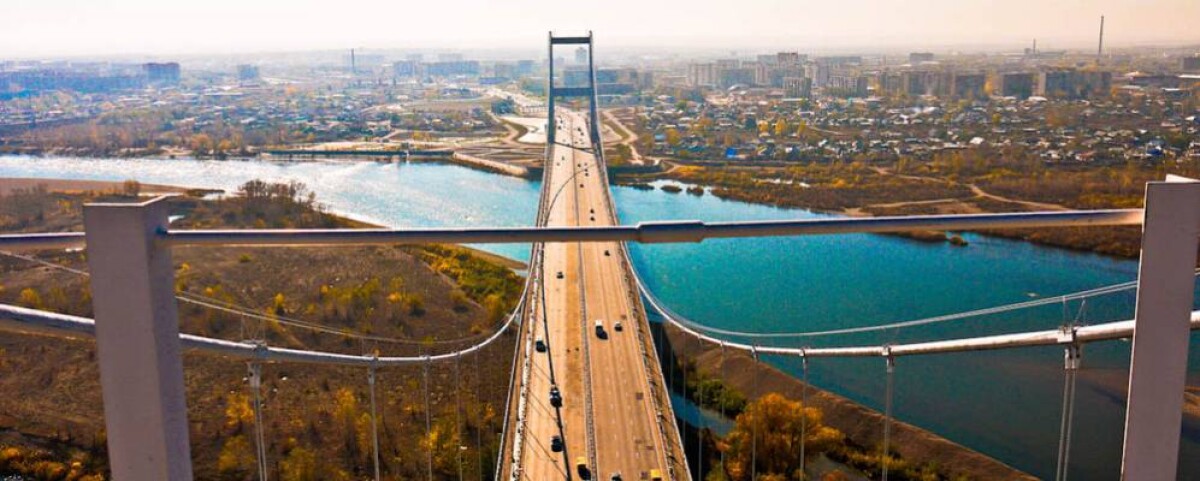
Interest in the Kazakh steppe in the 16th century was due to a number of objective reasons and subjective circumstances related to socio-economic development. As centralization and strengthening of state power in Russia, the opportunities for trade exchange and other relations with the eastern neighbors increased significantly. The accession to Russia of Kazan (1552), Astrakhan (1556) and Siberian (1598) khanates contributed to the establishment of the Kama trade route, which led to Siberia and the Kazakh steppes. Striving to consolidate its positions in this region and ensure the security of the eastern borders, the tsarist government established a number of Russian cities and jails: Tyumen, Tobolsk, Tara, Tomsk and others. For the first time up the Irtysh the Russians moved after they settled on Tara and Tobol and penetrated the Central Ob.
Semipalatinsk was founded in 1718 and it is connected with the famous decree of Peter I on the protection of the eastern lands and the beginning of the construction of the Priirtysh fortifications, the construction of which continued from 1714 to 1720. The fortresses of the Irtysh line were intended to provide security against attacks from nomads and the development of trade. "In 1718, one of the strong Irtysh fortresses was laid - the fortress of Semipalatnaya, which played an important role in the conquest of the upper Irtysh and the Western Altai.
.jpg)
Semipalatinsk fortress, which arose as a border and military base, developed as an important trade point not only between Russia and Kazakhstan, but also between Russia, Central Asia and Western China. From the very foundation of Semipalatinsk, Dzungarian Kalmyks, Bukharans, Tashkentis, and Kokandis came here for bargaining. To control trade operations with Asian merchants, customs were established in 1728. In the first years of its existence, the Semipalatinsk customs was subordinated to the Siberian order, located in Moscow under the General Directorate.
By the end of the 18th century, the Governor-General of Western Siberia sent Engineer Captain Andreev to the city to rebuild the fortress. He rebuilt the fortress, built bridges, made plans and maps of military fortifications, and established city duma and court. By the end of 1854 Semipalatinsk became the regional center of the newly organized Semipalatinsk region, whose population in 1858 was nearly three hundred thousand people. In 1863 in Semipalatinsk one district school operated with a female school attached to it, 2 parochial schools, 14 Cossack and 9 private Tatar schools. The women's school in 1864 was transformed into a secondary school. Infrastructure in the city was also constantly developing: in 1873 the city was equipped with a telegraph, in 1906 - by water communication due to the opening of navigation on Ertis, in 1910 - by telephone and the first water pipe in Kazakhstan.
At the turn of the 19th and 20th centuries, among institutions of education in the city there were male and female classical gymnasiums, a teacher's seminary, in which among others Mukhtar Auezov and Kanysh Satpayev studied. The history of Semipalatinsk and its environs was explored by the famous historian and geographer N. Abramov. From the economic point of view, at the end of the 19th century and the beginning of the 20th century, an industry was created in the region, mainly oriented for the primary processing of raw materials for export, where wool and leather were prepared for large Russian firms and cloth factories of the military department.
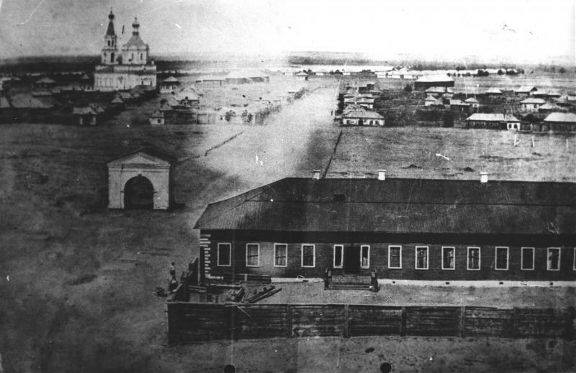
After the October Revolution of 1917, Soviet power in the city was established on February 16, 1918. Back then Semipalatinsk was run by the whites. In the following decade the city was the center of the province, while in 1928-1932 - the center of the district, since 1932, when the division of Kazakhstan into oblasts was made, the city became the center of the East Kazakhstan region, and since 1939 - the Semipalatinsk region. In the 1930s, large enterprises and infrastructure elements were built in the city: the Turkestan-Siberian Railway was built across the city in 1930, within the framework of the First Five-Year Plan, one of the largest meat-packing plants was built in the USSR, a mill was also built, a new tannery, a sheepskin factory with a special laboratory, a ship repair plant. During the Great Patriotic War, in the territory of the region since 238th and 8th rifle divisions were formed. On May 3, 1942, the 238th division was awarded the Order of the Red Banner of Battle, on May 24, 1942, it was transformed into the 30th Guards, and on November 3, 1944, it was given the honorary name 'Riga'. The 8th division began military operations near Voronezh, participated in the Battle of Kursk. March 5, 1944 she was given the honorary title of "Yampolskaya". During the war, the title of Hero of the Soviet Union was awarded to 56 residents of the city.
Situated at the intersection of strategic, rail, road, water and air transport arteries, the city has been and remains an important link in international trade. In the middle of the 19th century, due to its geographical position on the vastness of trade, it occupied one of the leading places among the cities of Kazakhstan.
Day and night crossing Semipalatinsk, trains and caravan races, ships on the Irtysh, life at an international airport, capable of taking any type of aircraft from different parts of the globe, does not die. There is a brisk trade today. The city has many modern shopping centers and supermarkets, cozy boutiques and old-fashioned shops where you can buy national souvenirs, quality, modern, and most importantly inexpensive locally produced products, which will help to preserve pleasant memories of our city and products from almost all over the world. Semey bazaars are very picturesque in the east, where not only local merchants trade their merchandise, but also trade people from China, Central Asian countries, Russia. They are invariably visited by numerous visitors of the city.

Semey undoubtedly belongs to the cities, in the guise of which lies the seal of history. Houses with a centuries-old past here and there are replaced by modern buildings. Semipalatinsk carefully guard everything that serves the decoration of the city, tell about its history. For example, the Fortress Yamishevskie gates, established in 1776, a two-meter-thick wall of the arch have a depth of about ten meters. In the museum of local lore, the castle from these gates, similar to the two-pood weight, is still kept. But if the gate of the Semipalatinsk fortress is only a historical object of the urban environment for us, then the 4 mosques, the church and the chapel built in the 8th - 19th centuries not only adorn the city, but continue to serve ... Among the churches of the city, there is a two-meeting cathedral mosque, the sky has thrown up its minarets. There are many ancient buildings that perfectly fit into the architectural ensemble of the city. But only those buildings are preserved in Semipalatinsk, which, undoubtedly, represent historical and architectural value.
One of the most darkest pages in the history of Kazakhstan was the existence of Semipalatinsk nuclear test site. The choice of a site for a nuclear test site and its equipment was a serious issue back then. In 1947, a commission of Soviet specialists surveyed a number of sites, studied the natural conditions, the population of the territory, the conditions for the construction and life support of the future landfill and other characteristics of the terrain. The most suitable for these parameters for locating the nuclear test site was the desert steppe in Kazakhstan's Semipalatinsk region.
Within a radius of one hundred kilometers there were no settlements and any national economic objects chosen for the landfill site were characterized by extremely low population density (according to a special resolution of the Council of Ministers of the USSR, only 138 people were resettled when creating the landfill). The exploration work and preparation of the project task began at an accelerated pace. The construction, equipment and operation of the landfill was entrusted to the Ministry of Armed Forces of the USSR.
.png)
By the end of September 1947, the first units of military builders were sent to the site. The polygon was formed taking into account the independent and complex solution of tasks as a separate part of the central subordination and had in its composition the most diverse units: combat, rear, transport, medical, security, as well as a multiprofile experimental-scientific part and an air squadron. The staffing of the training area with the officer corps went at an accelerated pace. The selection of personnel was conducted on the basis of personal data. After checking the personal data, the appointment was made by order in absentia, without the personal conversation and consent of the officer. The experimental field for conducting air nuclear tests was selected at a distance of 70 km from the living area of the test site.
It was in a hollow surrounded by hills. By the spring of 1949, the main works were completed and the first nuclear test in the atmosphere on the site was carried out, as is known, on August 29, 1949. The last test in the atmosphere over the experimental field took place on December 24, 1962, after which the test sites of this field were not operated. The Semipalatinsk test site was built in just two years by the forces of dozens of builders and cost the ruined and hungry country after the World War II a huge sum of millions of rubles at that time. In the fall of 1959, a government commission composed of representatives from the Ministry of Defense of the USSR, the Ministry of Medium Machine Building of the USSR, the Ministry of Geology of the USSR, and the Academy of Sciences of the USSR began work to select a territory for conducting underground nuclear tests . The chosen site occupied the territory of the Degelen mountain massif, located in the southern part of the test site.
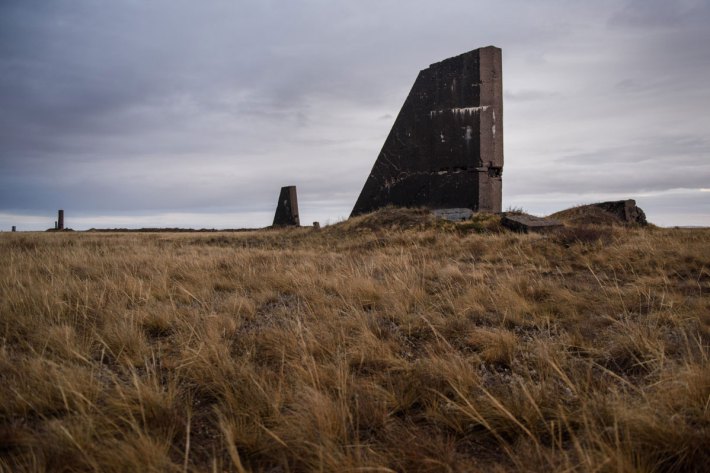
The last nuclear explosion in Degelen was carried out by the end of 1989. Almost simultaneously, the study and development of the Balapan test site, located in the southeast of the SIP and intended for underground nuclear testing in wells, was carried out. Tests on the "Balapan" began in 1965. The last test on this site was held on October 19, 1989. The Semipalatinsk test site was located on the territory of the Semipalatinsk, Pavlodar and Karaganda regions of the Kazakh SSR. More than half of this territory belonged to Semipalatinsk, 39% to Pavlodar, and 8% to Karaganda regions. Economically, the area was poorly developed. Small rural settlements were located mainly in river valleys. The rest of the territory was scattered temporary summer and winter. The population of the district was heterogeneous in its ethnic composition: Kazakhs, Russians, Ukrainians, Germans. The main occupation of the population was livestock. The road network consisted of small country roads, satisfactory for their quality in the dry season and difficult to penetrate into the mudslide.
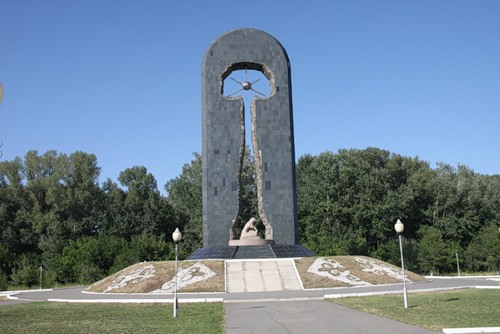
On August 29, 1991 by the decision of the Government of Kazakhstan, the testing site was closed. The last tunnel of the test site was blown up on July 29, 2000. Despite the liquidation of the landfill infrastructure, in Kurchatov there is the National Nuclear Center of the Republic of Kazakhstan, which continues observations and experiments in the field of nuclear energy and radiobiology.
Today's image of the city is characterized by a number of interesting architectural structures. First and foremost, this is a unique ensemble of the central square named after Abai, which defines a white-built building of the eponymous theater, like a fairytale castle, Shakarim and Auezov Avenue, built on high-rise buildings, the main thoroughfares connecting both parts of the city.
We can not fail to mention the Palace of Youth, the House of Trade Unions, the Palace of Weddings, buildings, the State Archives, the river and air terminals, the Binar, Tourist and Irtysh hotels, which offer a wonderful panorama of the central part of the city and the janasemeisk new buildings on the left bank.
A bright landmark of the city has become a new suspension bridge across the Irtysh river. He is still the only suspension bridge in the world and 17 in the world. Namely, there are only three such constructions. General reconstruction associated with its construction touched many corners of the city. It is always interesting for guests to visit city festivals, for they are able to celebrate Semipalatinsk. This is the spring holiday "Nauryz" and the City Day and the Tatar Sabantuy. A special mournful memorable day on August 29 is the day of the first explosion at the nuclear test site near Semipalatinsk. Also commemorative for the Semipalatinians days of mourning on August 6 and 9 are the days of the bombing of Hiroshima and Nagasaki. The tragic consequences of the tests at the nuclear test site are reminiscent of the exhibits of the anatomical museum of the medical academy.
The city is beautiful at any time of the year, and when the snow falls on its streets with a fluffy veil, and in the autumn when the city is dressed in a gold-purplish gown, in the spring when the city is buried in the tender green of blossoming leaves and the grass that breaks through the white and pink scum of blossoming apple and cherry blossoms. In winter, frosts sometimes reach -45, and in the summer sometimes + 50 when in the midday heat, the golden disk of the sun sparkles in the blue sky sparkling with golden rays, pouring gold on the wings of the eagle soaring into the sky. However, in general, the weather conditions are normal and will accommodate guests with any tastes. And the average temperature is + 25 in summer and - 20 in winter.

The unique historical centers of the city will be of interest to people: Abai State Historical, Cultural and Literary Memorial Museum, Dostoevsky Literary and Memorial Museum, the Museum of Local History, the Nevzorov Museum of Fine Arts, where there are original Tropinin, Shishkin, Levitan, Serov, Repin, Klever, Korovin, a rich collection of Kazakh, Ukrainian, Uzbek and Armenian artists. Agree, not every museum can boast of such wealth, its unique collection fits perfectly with the interior of the ancient, white colonnaded building. The museum of miniature dolls "Little World" enjoys the love of city dwellers and visitors of the city, where famous figures of politics, movie stars and pop stars can be found among the characters of different epochs and peoples. The first Polygraph Museum in Kazakhstan was opened. It is always crowded at the Semipalatinsk Vernissage near the shopping center "Zhibek zholy", where artists, craftsmen, collectors gather at the weekend.
The city is permeated with spirituality. He is the birthplace of a whole galaxy of outstanding figures of literature, art and science. This land gave the world a great poet and thinker, the national pride of Kazakhstan - Abai Kunanbayev, the outstanding philosopher Shakarim Kudaiberdiev, the coryphaeus of world literature Mukhtar Auezov, the unrivaled singer-improviser Amre Kashaubayev, who at the time stole people's hearts in Paris.
For several years, the great Russian writer Fyodor Dostoyevsky lived and worked in Semipalatinsk. Here his friendship with the outstanding Kazakh scientist Shokan Ualikhanov was born. Academician Kanysh Satpayev, academician Alkei Margulan, famous writers - Vsevolod Ivanov, Nikolai Anov, Galina Serebryakova, poets Sabit Donentayev, Sultanmahmud Toraigyrov, researcher - Kayum Mukhamedkanov, cultural figures Bibigul Tulegenova also studied, lived and worked in Semey, Roza Rymbaeva, Erkegali Rahmadiev Bari Alibasov and many others. From ancient times, the city attracted researchers from different countries across the world: Przhevalsky, Potanin, Semyonov-Tianshansky, George Kennan and many others visited the city. Here there were political exiles who made a great contribution to the development of the region: Michaelis, Dolgopolov, Gross, Lobanovsky, and Abai often communicated with them.
In 1917, the leaders of the party of the Kazakh intelligentsia Alash Orda raised the banner of freedom and founded their government. Semey is the birthplace of Kazakh football, the first national circus, in which the world-famous Kazakh batyr Hadzhimukan Munaitpasov performed. Kazakhstan was glorified by Semipalatinsk sportsmen, including the first Kazakh participant of the Olympics Gusman Kosanov, Leonid Nikitenko, Vasily Yarkov, Zhaksylyk Ushkempirov, Daulet Turlykhanov. Here, in the middle of the 19th century, the first printing house in Kazakhstan was founded, and at the beginning of the 20th century the first Center for Standardization and Metrology was established in Kazakhstan.
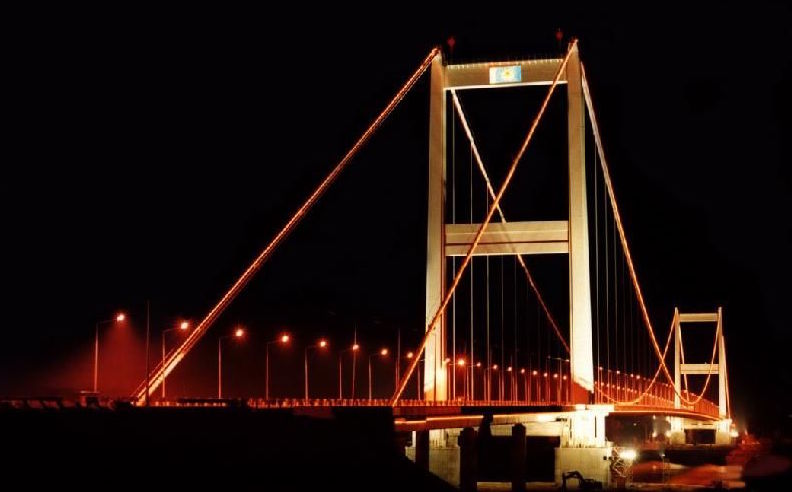
Eight newspapers in Russian and Kazakh languages published in the city, a city radio station and television studios bring news to townspeople about their beloved city. There are 16 Kazakhstani and foreign TV channels to the services of Semipalatinsk. Published and its magazine "Amanat". Many years ago in our city, an interregional branch of the Writers' Union of Kazakhstan was created, the only one for the towns of Irtysh. In the past, the recognized center of the light and food industry of the USSR, where the third largest meat factory in the Soviet Union was, and the "Bolshevichka" shirts enjoyed success not only among the citizens of the former Soviet state. Today, it also could not but be reflected in the economic crisis that erupted throughout the post-Soviet space. However, the former pride of the former Soviet industry is rebuilding its economy today. There were small businesses that are trying to produce import-substituting products. There are great opportunities for investment and the creation of large enterprises.
The surrounding area is rich in historical and cultural monuments. Many guests of the region will undoubtedly be interested in the most interesting tourist routes. One of them is a trip to the geographical center of the Eurasian continent to Abay Kunanbayev, Shakarim Kudaiberdiuly and Mukhtar Auezov. There are literary and memorial houses of the museum of the classics (branches of the Abay city museum), the monument of love "Enlik-Kebek" (Kazakh Tristan and Isolde), an elegant sign denoting the geographical center of Eurasia, a unique underground grotto "Qonyr Aulie". This land is covered with legends, here in the mountains, according to legend, was the stake of the great Genghis khan. There you can get acquainted with the ancient Kazakh architecture, enjoy the grandeur of the mausoleum complex Abay-Shakarim, the beauty of the mausoleums of Tokhtamysh khan and Mamai batyr, touch the way of life and traditions of the people, see the places through which the legendary Attila and Genghis khan went west, visit the ethnographic aul and see the performances of ethnographic collectives.
Having visited Semey, you will not only have a good rest and discover a lot of new things for yourself, but also contribute to the economic revival of a region that suffered from nuclear testing.
